Key takeaways
- Student portfolios provide a comprehensive view of individual learning journeys, emphasizing growth over final products.
- Seesaw is an effective digital platform for students to organize their work, express their thoughts, and foster collaboration with teachers and families.
- Digital portfolios enhance accessibility and ownership, allowing students to reflect on their development through a visual narrative.
- Integrating Seesaw in teaching encourages active engagement and critical thinking, enabling students to share their perspectives on important social issues.
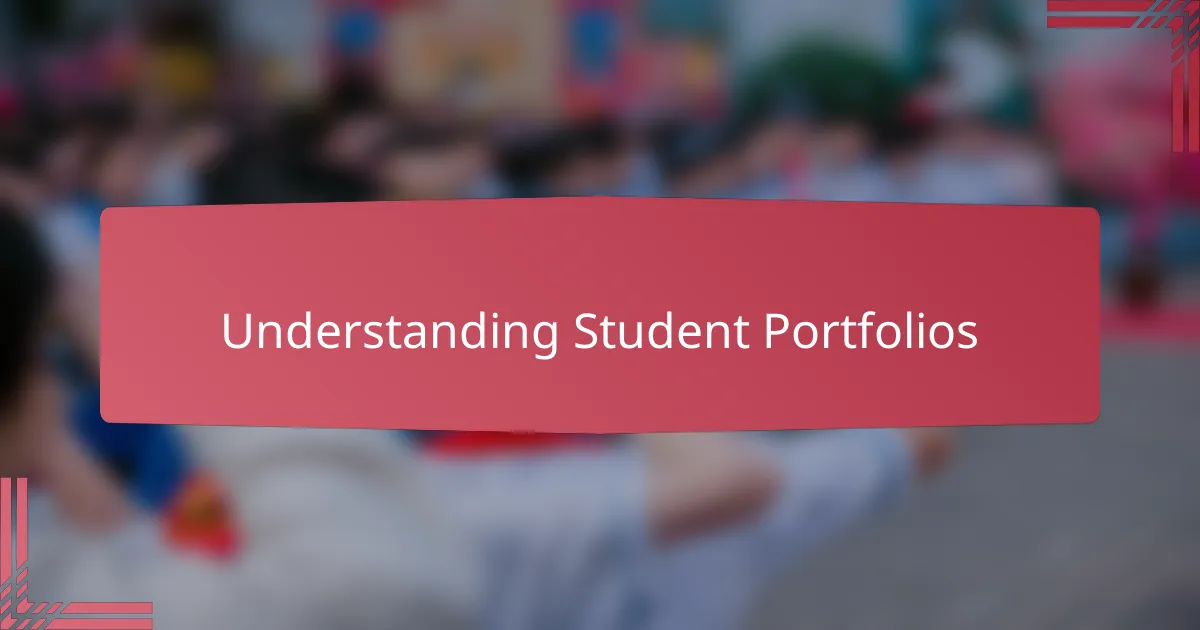
Understanding Student Portfolios
Student portfolios are more than just a collection of work—they’re a window into each student’s learning journey. When I first started using portfolios, I was struck by how they revealed not just what students knew, but how they thought and grew over time. Have you ever wondered what stories your students’ work could tell if you truly looked closely?
These portfolios allow students to own their learning, making the process more meaningful rather than just a task to complete. I noticed that when students took responsibility for their portfolios, their motivation and confidence often soared. What if we shifted from seeing portfolios as a grading tool to viewing them as a personal reflection of growth?
In my experience, portfolios are a powerful way to capture the messy, nonlinear process of learning that traditional tests rarely show. They include drafts, mistakes, and moments of breakthrough all in one place. Isn’t it refreshing to consider learning as a continual unfolding, rather than a final product?
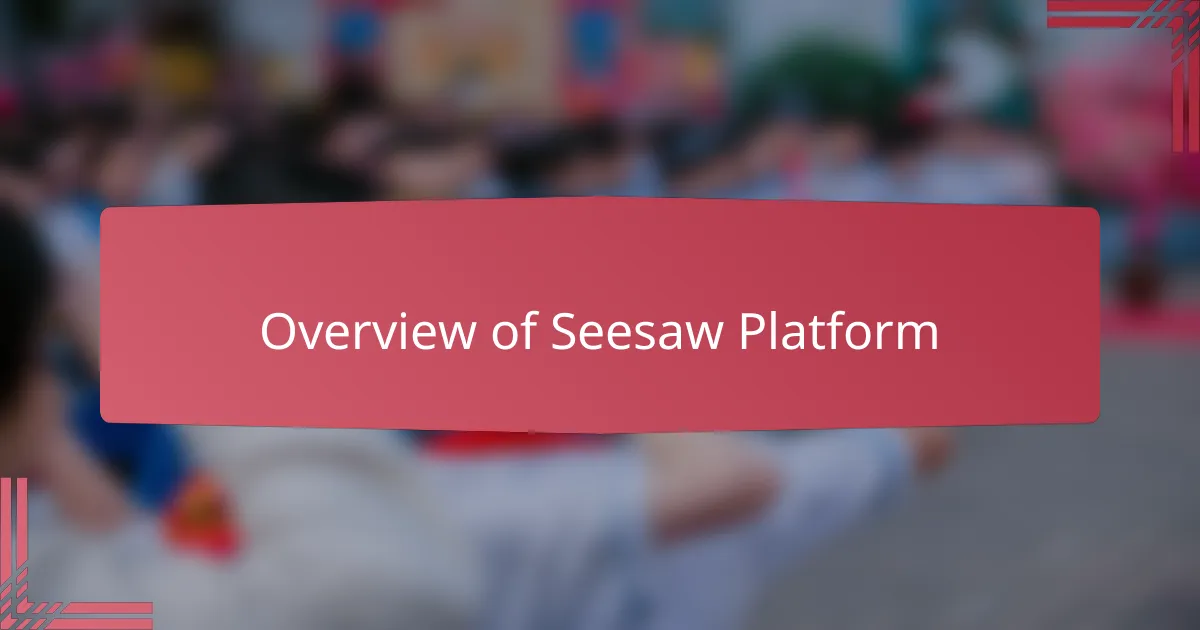
Overview of Seesaw Platform
Seesaw is a digital platform that transforms how students compile and share their work. When I first explored it, I was amazed by how intuitive and flexible it felt—perfect for capturing those authentic moments of learning. Have you ever struggled to keep physical portfolios organized? Seesaw solves that with a simple, visual interface that lets students upload videos, drawings, photos, and text all in one place.
One aspect that stood out to me was how Seesaw encourages student voice. Instead of just submitting assignments, kids can explain their thinking aloud or reflect on their progress. This feature brought a new depth to their portfolios, making them more personal and meaningful. Isn’t it powerful to hear a student’s own explanation of their learning journey, rather than just seeing a finished product?
I also appreciated how Seesaw fosters collaboration among students, teachers, and families. Sharing portfolios with parents became effortless, and the instant feedback loop helped build a supportive learning community. From my experience, this transparency not only motivates students but also strengthens the connection between school and home. Wouldn’t you agree that learning thrives best when everyone stays engaged?
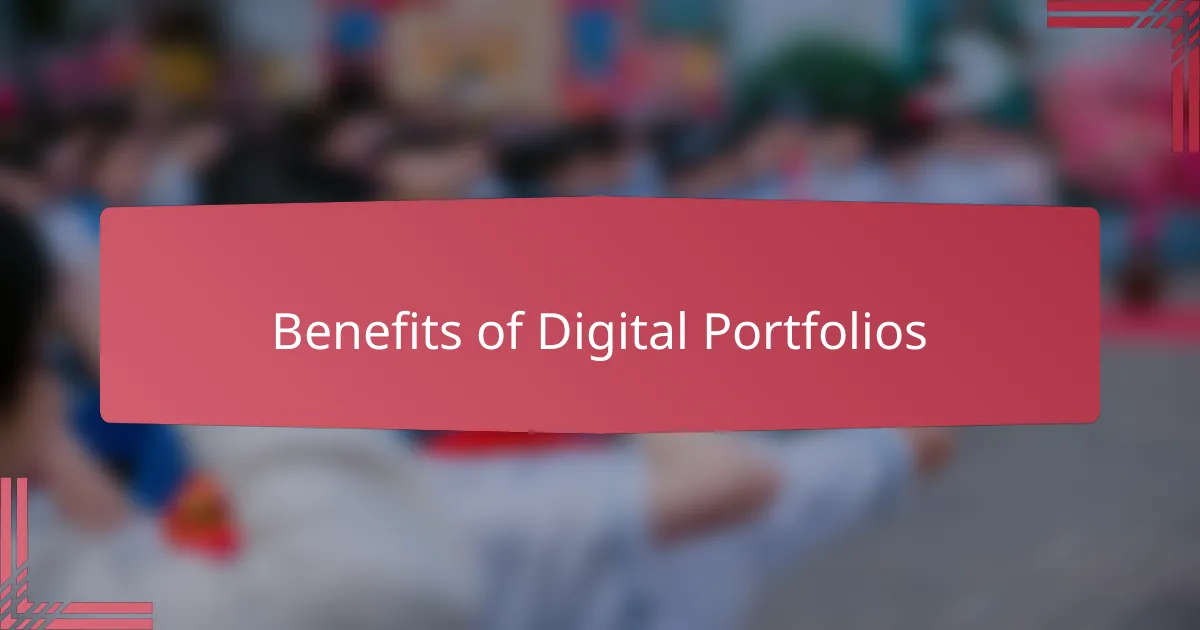
Benefits of Digital Portfolios
Digital portfolios bring a new level of accessibility and organization that I found invaluable. Instead of stacks of papers gathering dust, everything lives online—easy to update, share, and revisit anytime. Doesn’t it feel freeing to have student work so neatly collected and readily available?
One of the biggest benefits I noticed was how digital portfolios give students a real sense of ownership. Watching a student proudly navigate through their Seesaw portfolio, explaining their progress in their own words, reminded me that learning is deeply personal. How often do we create space for students to become authors of their own stories?
What truly stood out for me was the way digital portfolios invite reflection and growth. When students can see their past efforts alongside new work, they begin to appreciate their own development. Isn’t it incredible when learning becomes a visible journey rather than just a snapshot?

Setting Up Seesaw for Students
Getting started with Seesaw for students was surprisingly straightforward. I created individual student accounts by entering their names, which made the process feel personal right from the start. Have you ever noticed how a simple setup can make both teachers and students feel more connected to the tool?
One thing that really caught my attention was setting up class codes for easy access. Sharing this code with students allowed them to log in independently, fostering a sense of ownership early on. I found that this small step boosted their confidence, as they felt empowered to manage their own portfolios digitally.
Lastly, I took some time to explore and customize the settings before inviting students in. Adjusting privacy controls and notification preferences gave me peace of mind, knowing the platform would support a safe and focused learning environment. Don’t you think that starting with these thoughtful tweaks makes a big difference in how smoothly things run later?
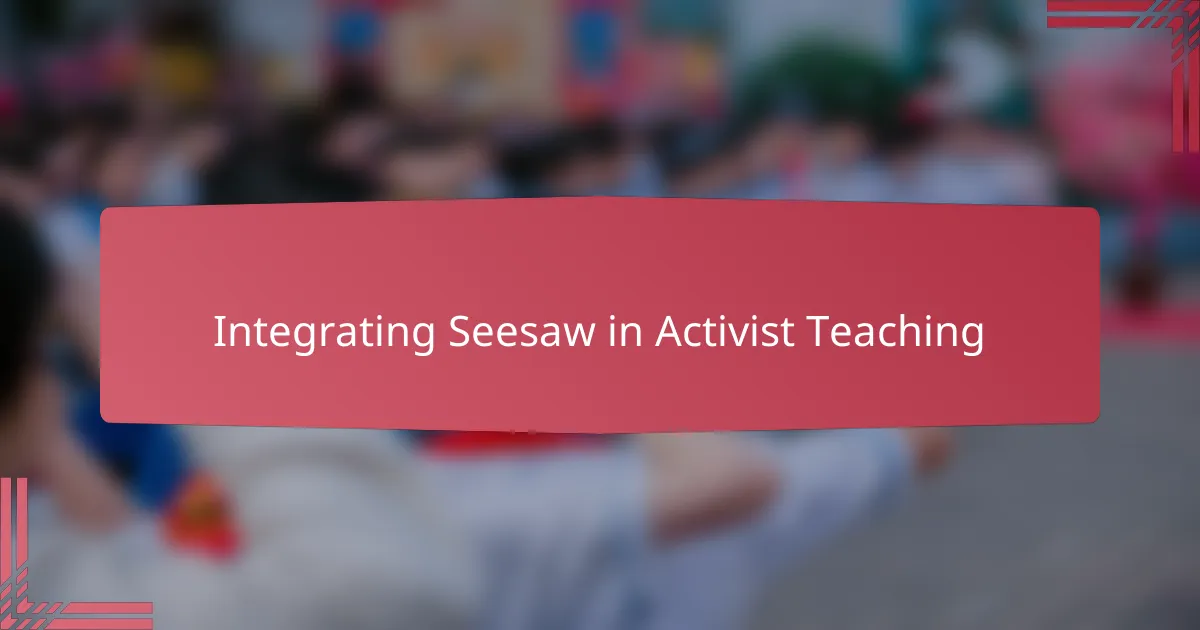
Integrating Seesaw in Activist Teaching
Integrating Seesaw into activist teaching immediately felt like a natural fit for me because it amplifies student voices in ways traditional methods rarely do. When students use Seesaw to document not just what they learn but how they feel and think about social issues, their perspectives become central. Have you ever noticed how empowering it is when learners take control over the narrative of their own understanding?
I remember one powerful moment when a student shared a photo essay on Seesaw highlighting community challenges and activism efforts. Seeing their raw emotions and reflections through the platform made me realize how Seesaw can turn portfolios into living testimonies of social consciousness. Doesn’t it shift our role from instructor to ally when students lead the conversation this way?
What I appreciate most is how Seesaw supports ongoing dialogue between students, teachers, and families around issues that matter deeply. By integrating activist teaching with portfolio sharing, I witnessed a genuine connection form—one that encourages critical thinking, empathy, and action beyond the classroom walls. Isn’t that the kind of impact we hope education sparks?
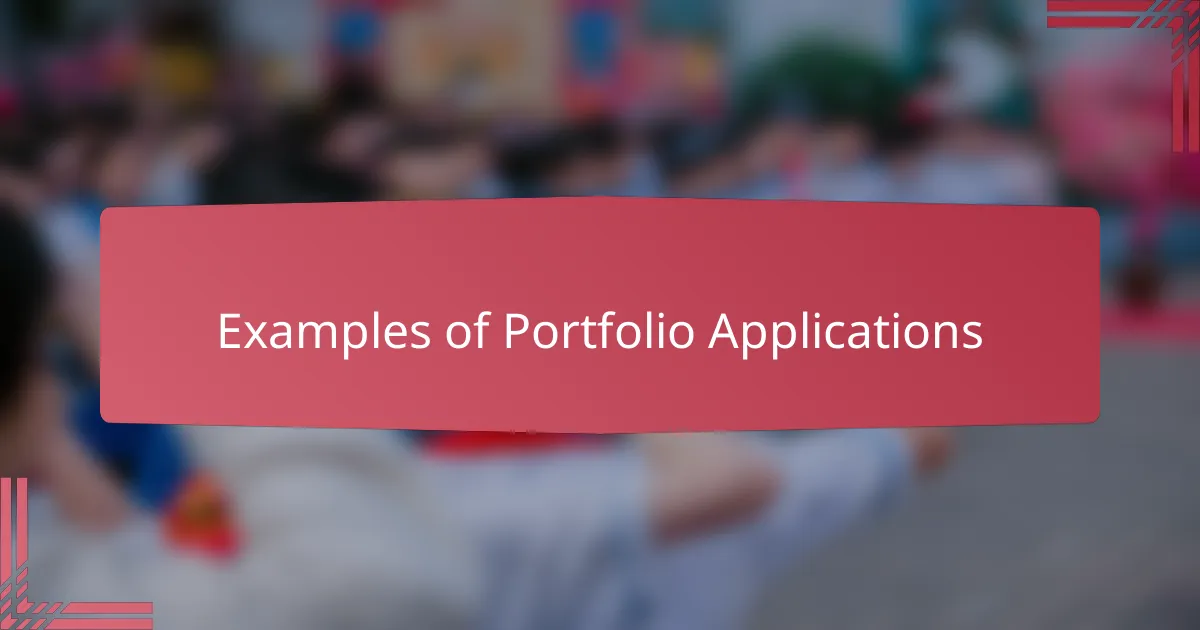
Examples of Portfolio Applications
One way I’ve applied Seesaw for portfolios is by having students document their research projects step by step. It’s fascinating to see how their initial ideas evolve, especially when they record voice notes explaining their thought process. Have you ever noticed how capturing those in-the-moment reflections brings a whole new layer of understanding to their work?
Another example that stands out came from a class where students curated portfolios focused on social justice themes. They uploaded videos, artwork, and journal entries, turning their digital portfolios into vivid stories of activism and personal growth. Witnessing such passionate engagement reminded me how portfolios can be more than academic—they can be powerful vehicles for student voice.
In weekly check-ins, I encouraged students to select one piece from their portfolio to share with peers and discuss what they learned or found challenging. This practice not only boosted their confidence but also built a classroom culture centered on support and vulnerability. Isn’t it amazing how a simple portfolio tool like Seesaw can foster such meaningful connection?
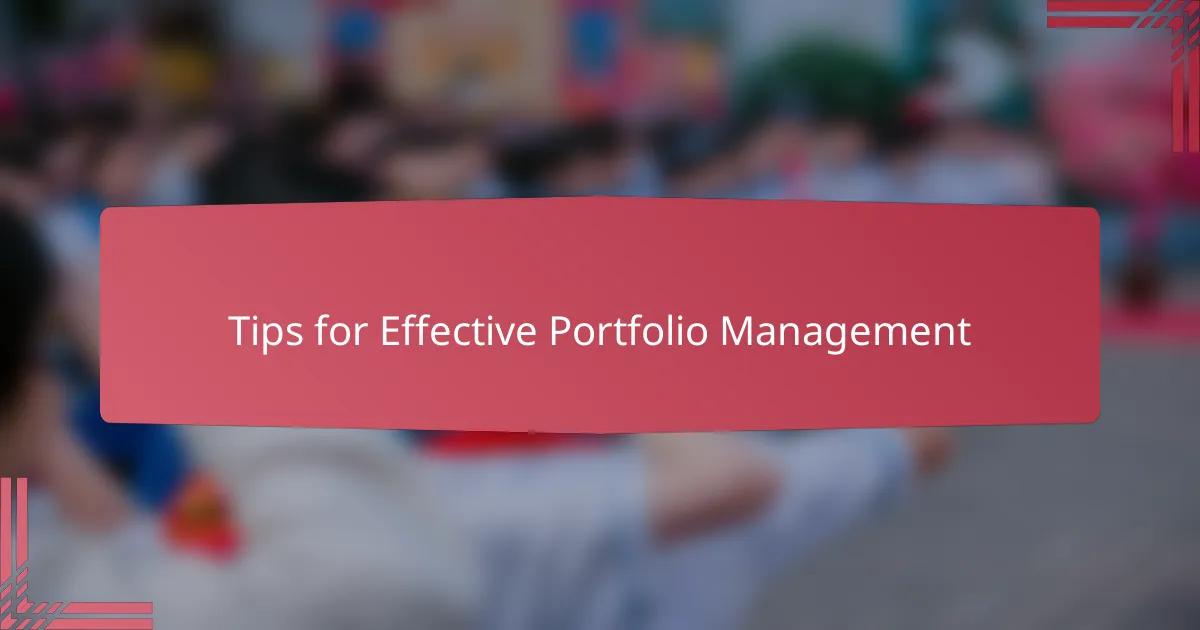
Tips for Effective Portfolio Management
Managing portfolios effectively with Seesaw, in my experience, hinges on setting clear expectations from the start. I found that when students understand what kinds of work to include—and why—it transforms the portfolio from a random collection into a coherent story of growth. Have you tried guiding your students to select pieces that truly represent their learning, rather than just any completed task?
Another tip I found invaluable was scheduling regular portfolio reflections. Integrating short, intentional moments for students to review and comment on their own work not only deepened their self-awareness but also kept the portfolio alive and meaningful. I remember how one quiet student blossomed once they had the chance to express their thoughts about their progress through Seesaw’s voice recording feature—doesn’t that kind of insight warm your heart?
Lastly, I can’t stress enough the importance of involving families in the portfolio process. Sharing Seesaw portfolios with parents created a bridge that extended learning beyond the classroom walls. When parents saw and heard their child’s journey firsthand, it sparked conversations at home and boosted students’ pride. Have you noticed how a little family engagement can supercharge a student’s motivation?